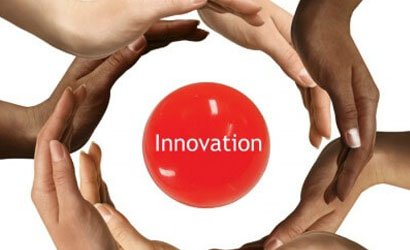
When a company is first setup, the founders tend to work with people that are their friends, people that share their vision and are driven by a common goal – people just like them. As the company becomes successful and they run out of friends, the need to hire the right people becomes increasingly important and is key for driving innovation and success. Jim Collins, author of the best-selling “Good to Great”, says it is imperative to “get the right people on the bus”. And as we will explore later, the right people might not be people like ourselves.
I recently read an article in which the Executive Chairman of Google talked about the ratio of women and minorities in the Tech Industry. What Eric Schmidt said in this interview can easily be interpreted as an example of “in-group favoritism,” the well-documented tendency for people to favor other people who are similar to themselves. A group of highly educated group of white men – like the founders of Google – will tend to seek out and place their trust in other people like them
Michael Gladwell, in his book “Blink” talks about how we make really fast decisions regarding the people we meet. In a “blink” we decide if we like this person or not, and sometimes those decisions are not necessarily tied to performance, but our own idiosyncrasies.
A full chapter in his book is devoted to blind auditions, where orchestras in the 1980s started putting up screens in audition rooms so that the committee could no longer see the person auditioning. And immediately – immediately! – orchestras started hiring women far more frequently. This was contrary to prior to adopting the screen when most of the new hires were men. Under this “blind audition” system, people were judged on their ability to play, rather on how they looked or otherwise. So, in fact, orchestras have become a lot better, because they are getting “the right people on the bus”.
Why is it important?
“Innovation does not occur unless you have diversity and conflict”. (Linda Hill)
We all know that innovation is key in securing organic growth and securing success. And what drives innovation? Diversity does. This has been repeatedly demonstrated in several studies.
A Forbes study shows that diversity is key in driving innovation in transnational companies. Research by Harvard Business School shows that creating a multicultural workplace is often a positive strategy to foster innovation. So companies must foster diversity, but not just measured by race or gender, but by perspectives, experiences, cultures, genders, and age.
At Apple, the most valuable company in the world, diversity has been critical to their success. In their diversity page they state “Apple is committed to transparency, which is why we are publishing statistics about the race and gender makeup of our company” If it works for Apple, it might work for you too, right?
Business professors, Cristian Deszö of the University of Maryland and David Ross of Columbia University, studied the effect of gender diversity on the top firms. They found that companies that prioritized innovation saw greater financial gains when women were part of the top leadership ranks.
Racial diversity can deliver the same kinds of benefits. In a study conducted in 2003, Orlando Richard, a professor at the University of Texas at Dallas, put together a database comparing financial performance, racial diversity and the emphasis the bank presidents put on innovation. For innovation-focused banks, increases in racial diversity were clearly related to enhanced financial performance.
“Being around people who are different from us makes us more creative, more diligent and harder-working” (Katherine W. Phillips)
What to do about it?
To get “the right people on the bus”, establish a recruiting/interview/hiring team to reduce individual bias. Include members of diverse communities or staff with a good understanding of cross-cultural issues. This is probably the most important component of your team. Every team member involved in these three components for any position (recruiter, interviewers and hiring manager) should understand and agree upon the minimum job requirements and essential job functions. This might not sound like ‘diversity,’ but you cannot do ‘diversity’ if there is not a system that will sort employees based on their ability to do the job rather than on how they look, background, race, etc.
When you have a diverse group in your organization, adding different perspectives to the table, it makes people believe that differences of perspective might exist among them and that belief makes people change their behavior and think differently. When people agree easily (seen in homogenous groups), other valuable perspectives might be lost.
“Strength lies in differences, not in similarities”
__________
-Article was originally published on LinkedIn Pulse
